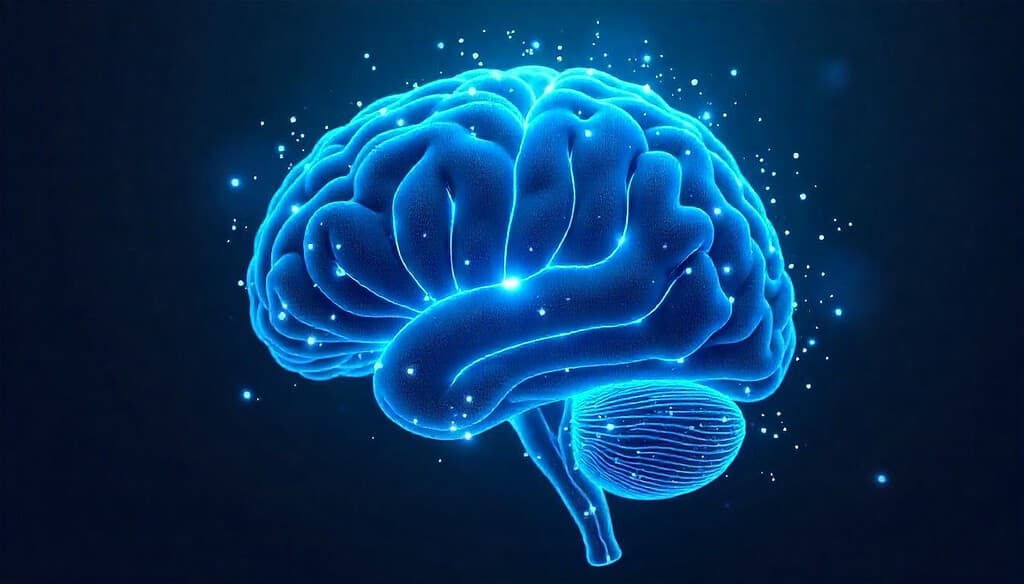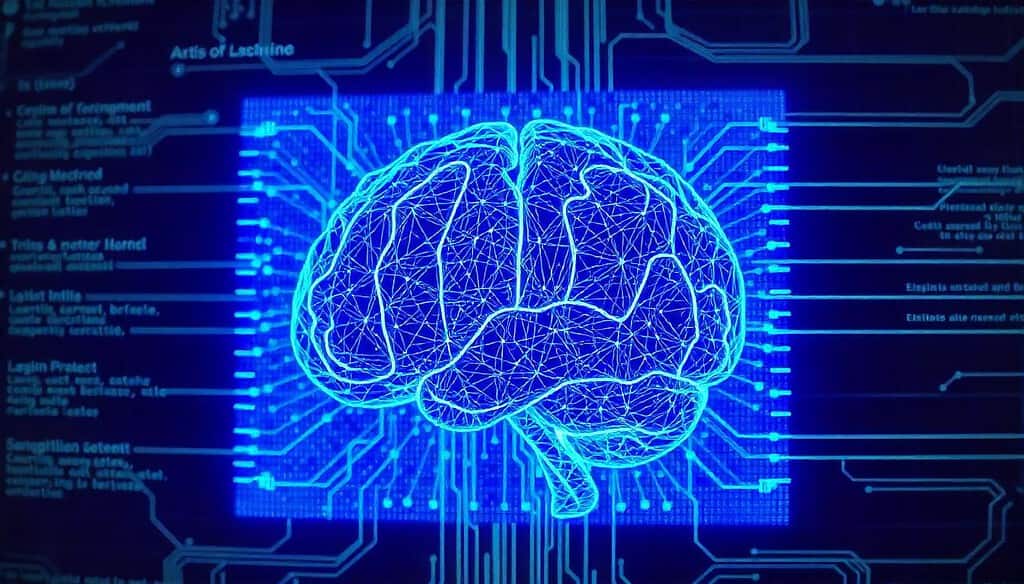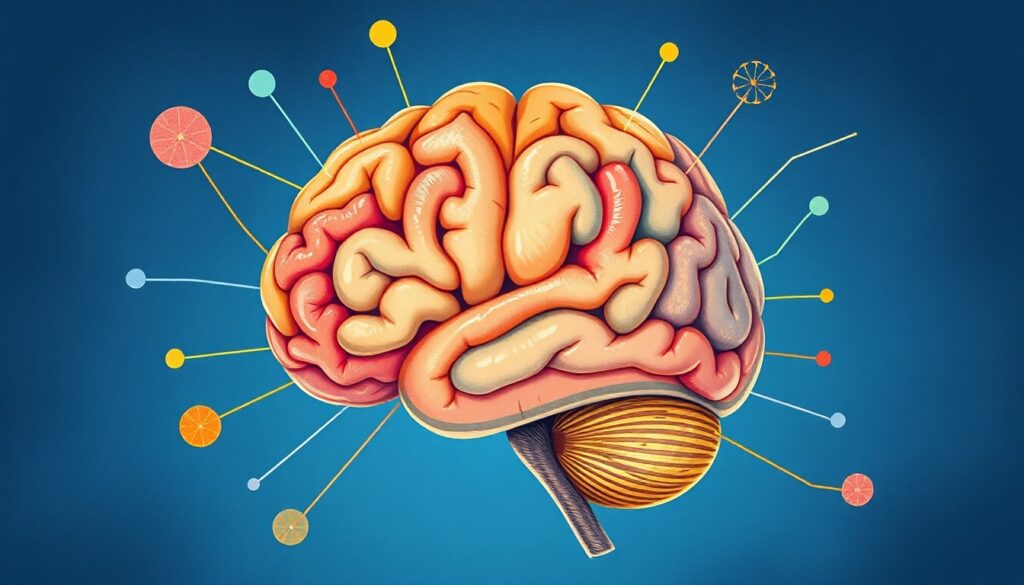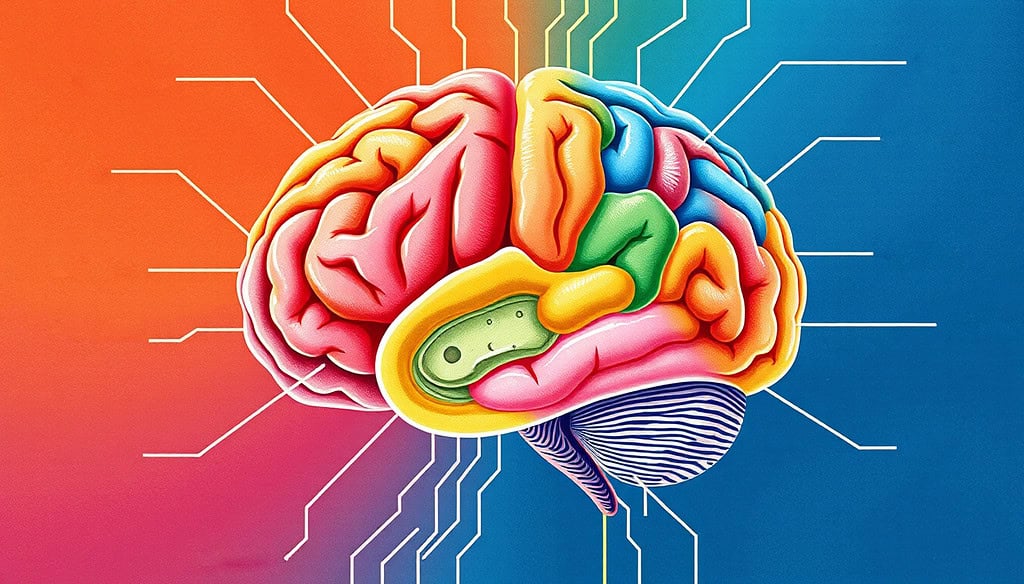Table of Contents
Brain Anatomy: Dynamic and Complex

Brain anatomy is a remarkable field that dives deep into the complex and ever-changing structure of the human brain. Unlike other organs, the brain is dynamic and continually evolving, responding actively to new experiences, environmental changes, personal choices, and new learning. This ongoing adaptability, known as neuroplasticity, enables the brain to reorganize its connections and even reshape itself in response to new information. Throughout our lifetime, brain anatomy is not only influenced by genetic factors but also by lifestyle choices, new learning, and even emotional experiences. These various factors play a role in reshaping connections between neurons, the brain’s essential cells responsible for transmitting information and building pathways for skills, memories, and habits.
As we age, brain anatomy undergoes significant transformations. In childhood and adolescence, the brain develops at a rapid rate, building an extensive network of neural connections, which become the foundation for complex thinking, motor skills, and emotional regulation. During these early years, the brain is highly adaptable, which allows children to acquire language, problem-solving skills, and emotional intelligence more swiftly than adults. But this process doesn’t stop in youth. Adulthood also brings changes as brain anatomy adapts to new learning, skills, and life experiences. For instance, activities such as learning a new language, picking up a musical instrument, or mastering complex job skills stimulate neural growth and foster connections in the brain regions associated with memory, coordination, and cognitive abilities.
Later in life, brain anatomy can undergo both constructive and regressive changes. While some cognitive functions may gradually decline, the brain continues to form new connections, especially with mentally stimulating activities. This adaptability underscores the importance of staying mentally and socially active, as it can help counterbalance age-related changes. Activities like reading, problem-solving, and social interaction support neural health, promoting a more resilient and adaptable brain well into older age.
Overall, the anatomy of the brain is not a fixed structure but an evolving network of pathways shaped by lifelong experiences. Each new experience, whether it’s a challenge overcome or a skill acquired, subtly reshapes this intricate anatomy. Through the lifelong journey of learning and adaptation, brain anatomy exemplifies the resilience and versatility that define human cognition and growth. Understanding this ongoing evolution highlights the brain’s extraordinary capacity to adapt, underscoring the immense potential for growth at any stage of life.
8 Incredible Ways New Learning Alters Our Brain Anatomy

1. Neurogenesis in the Hippocampus
The hippocampus, a key component of brain anatomy involved in memory and spatial processing, undergoes significant changes with new learning, notably through the process of neurogenesis, where new neurons are generated. This process is directly stimulated by the act of learning itself. Engaging in cognitively demanding activities, such as acquiring a new language, navigating unfamiliar environments, or solving complex problems, can accelerate the rate of neurogenesis in the hippocampus. These new neurons, once formed, contribute to forming fresh pathways that enable us to retain and retrieve information effectively, showcasing how brain anatomy evolves to support cognitive demands.
Unlike other brain areas where the focus is on strengthening existing connections, the hippocampus benefits from creating entirely new cells. The process of neurogenesis adds flexibility to the brain’s structure, providing resources for memory formation and complex learning. Furthermore, when these new neurons are integrated into the hippocampus, they don’t merely become passive cells; rather, they actively adapt to the tasks we undertake. For instance, engaging in mental exercises or problem-solving encourages the survival and strengthening of these neurons, contributing to more efficient processing and retention of learned information.
Physical activity also has a direct impact on this area of brain anatomy. Exercise supports neurogenesis by enhancing blood flow, which delivers oxygen and essential nutrients to the hippocampus, effectively preparing it for higher cognitive performance. Moreover, physical activity increases levels of brain-derived neurotrophic factor (BDNF), a protein that acts as a facilitator of neurogenesis. BDNF enhances neural growth and improves cell survival, making the hippocampus more adaptable to new learning. This adaptable nature of brain anatomy means that the more we engage with learning and cognitive activities, the more the hippocampus can develop new cells, thus building a robust structure for memory and knowledge.
Neurogenesis within the hippocampus ultimately illustrates how learning goes beyond mere information acquisition; it triggers anatomical changes in the brain, fostering a more flexible and responsive structure. This process not only supports memory retention and learning capacity but also enhances our ability to manage stress and adapt to changes, underlying the resilience within brain anatomy. Through neurogenesis, learning becomes a catalyst for physiological transformation, reinforcing how essential ongoing intellectual engagement is to maintaining a healthy, adaptive brain.
2. Synaptic Plasticity
Synaptic plasticity is a central mechanism through which new learning shapes brain anatomy. This process, defined by the strengthening, weakening, or formation of synapses (connections between neurons), enables the brain to adapt quickly to the demands of new information. When we learn, synaptic plasticity is stimulated to adjust the neural pathways necessary for storing and recalling that information. For example, if someone learns to play a musical instrument or picks up a new language, the brain strengthens specific synapses related to those skills, making it easier for these pathways to transmit signals efficiently.
The ability to form stronger synaptic connections demonstrates how adaptable brain anatomy is. Learning activities stimulate the release of neurotransmitters like dopamine, which plays a crucial role in solidifying these new connections. Each time we practice or revisit a learned skill, the brain fortifies the corresponding synapses, making them more effective at processing and transmitting relevant information. This principle is especially relevant in activities that require repetition, such as practicing a sport, solving mathematical problems, or developing critical thinking skills. Each repeated attempt activates synaptic plasticity, allowing brain anatomy to become more specialized in handling these tasks.
Beyond strengthening connections, new learning also encourages the formation of entirely new synapses, a process known as synaptogenesis. When we are exposed to novel information or environments, the brain responds by forming new synaptic connections to accommodate the incoming data. This adaptability enables brain anatomy to increase its storage and processing capacity, providing a broader network for handling complex and varied tasks. Synaptogenesis shows that learning not only refines existing pathways but also builds new routes within the brain, allowing us to process diverse forms of knowledge simultaneously.
Even synaptic weakening, a process known as synaptic pruning, is influenced by learning and is essential to optimizing brain anatomy. When certain connections become less active because they are not used frequently, the brain naturally eliminates these weaker pathways. This “use it or lose it” mechanism ensures that only the most relevant and efficient connections are maintained, helping us focus on learning skills that are regularly practiced. By refining neural circuits in this way, learning enables the brain to clear out unnecessary connections, preserving space and resources for new, meaningful information.
Through synaptic plasticity, new learning is an active driver of change within brain anatomy. Each connection that is reinforced, formed, or pruned is part of a dynamic system that enhances cognitive flexibility, memory storage, and adaptability, underscoring the profound impact of learning on brain function and structure.
3. Formation of Myelin Sheaths
The formation of myelin sheaths represents another vital way in which new learning directly affects brain anatomy. Myelin, a fatty substance that surrounds nerve fibers, acts as an insulator, enabling electrical signals to travel swiftly and efficiently along neurons. Learning new skills, particularly those that require repetition and precision, such as playing an instrument, typing, or practicing a sport, directly stimulates the growth of these myelin sheaths. This process, called myelination, enhances the brain’s capacity to transmit information rapidly and accurately, improving performance and memory retention.
When we engage in new learning, particularly through focused, repeated practice, specific pathways in the brain are activated, prompting the production of additional myelin around those pathways. Each repetition strengthens these circuits, reinforcing the connections required to perform that skill effectively. For example, if someone learns to ride a bicycle, repeated practice strengthens the circuits associated with balance and coordination, with increased myelin ensuring that signals are transmitted quickly enough to make rapid adjustments. This adaptability illustrates how brain anatomy is optimized through learning, facilitating both speed and precision in tasks.
Myelination is particularly evident during critical developmental periods, but it remains active in adults whenever they acquire new knowledge or skills. The growth of myelin in response to learning reflects the brain’s efficiency in optimizing frequently used pathways. By insulating specific nerve fibers more heavily, the brain can ensure that signals travel with minimal interference, which is essential for tasks requiring quick reactions and fine motor skills. This process also highlights the brain’s resourcefulness; rather than simply increasing neuron numbers, it refines existing pathways to enhance performance, conserving energy while improving functionality.
The influence of myelination on brain anatomy extends to cognitive tasks as well. Repeated exposure to complex concepts or reasoning exercises stimulates myelin growth in relevant areas, enabling faster information processing. For instance, learning advanced mathematical skills or logical reasoning exercises increases myelination in the brain regions responsible for analytical thinking. In this way, learning directly promotes changes in brain anatomy that optimize our ability to understand and apply complex knowledge.
Through the formation of myelin sheaths, learning contributes to brain anatomy’s continual refinement. By building faster, more efficient pathways, myelination makes it easier for us to recall information, perform tasks seamlessly, and respond to challenges quickly, underscoring the profound connection between learning and the structural adaptability of the brain.
4. Increased Dendritic Branching
Another significant change that new learning brings to brain anatomy is increased dendritic branching. Dendrites, the branch-like extensions of neurons, play a crucial role in connecting cells by receiving signals from neighboring neurons. When we learn, dendritic branching is stimulated, leading to the growth of these structures and the formation of more intricate connections within neural networks. This increase in dendrites directly impacts our ability to process, store, and recall information, as a denser network enables more efficient communication between neurons.
Engaging in new learning activities—especially those that involve complex or abstract thinking—promotes dendritic growth. For instance, learning how to play a musical instrument or studying advanced subjects encourages dendrites to branch out, allowing neurons to form more connections. This branching enhances brain anatomy by creating a more extensive network for signal transmission, facilitating quicker and more nuanced responses. Each time we are exposed to novel information, such as new languages, unfamiliar skills, or challenging tasks, dendritic branching helps the brain adapt to these demands by expanding its communicative capacity.
Dendritic branching is particularly responsive to varied learning experiences, indicating the importance of diversity in cognitive engagement. Unlike repetitive practice that strengthens specific pathways, exposure to different types of knowledge encourages the growth of dendrites in multiple regions. This expansion within brain anatomy allows us to connect related ideas across domains, supporting integrative thinking. For example, learning to paint while studying math and language forms connections across disparate brain regions, allowing for a richer, more interconnected understanding of each subject.
Learning not only increases the number of dendrites but also their complexity, as neurons develop more specialized branching patterns to handle specific types of information. This refined structure within brain anatomy aids in organizing knowledge, ensuring that we can retrieve and apply information as needed. Complex dendritic networks are particularly advantageous for problem-solving and critical thinking, where accessing diverse information sources is essential. In this way, dendritic branching highlights how brain anatomy adapts to support both the quantity and quality of our learning.
Increased dendritic branching is a prime example of how learning fosters adaptability within brain anatomy. Each new connection formed strengthens our cognitive abilities, illustrating that the brain’s structure is continually evolving in response to intellectual challenges, ready to process an ever-growing range of information.
5. Growth in the Gray Matter
The growth of gray matter is a fascinating aspect of brain anatomy that underscores how learning experiences can physically alter the brain. Gray matter consists primarily of neuronal cell bodies, dendrites, and synapses, playing a crucial role in processing information and supporting cognitive functions. Research indicates that engaging in new learning can lead to measurable increases in gray matter volume, particularly in regions associated with the skills being learned. For instance, individuals who learn complex tasks, such as playing a musical instrument or mastering a new language, often show increased gray matter density in the auditory cortex and areas related to language processing.
The mechanism behind gray matter growth is closely linked to neurogenesis and synaptic plasticity, both of which are stimulated by learning. When new experiences or knowledge are acquired, the brain responds by forming new neurons and reinforcing existing connections. This dynamic adaptation reflects how brain anatomy evolves in response to intellectual challenges, making it more efficient at processing information. Each time a person practices or engages with new material, their brain strengthens the relevant neural circuits, resulting in an overall increase in the size and functionality of gray matter in those areas.
Moreover, the effects of gray matter growth are not confined to just one area of the brain; they can be widespread. For example, learning new skills often results in interconnected changes across various regions of brain anatomy. This interconnectedness is vital for the integration of knowledge and skills, allowing individuals to draw on multiple areas of expertise when tackling complex problems. Additionally, the increase in gray matter can enhance cognitive flexibility, enabling individuals to adapt their thinking and approach based on new information or changing environments.
The implications of gray matter growth extend beyond cognitive abilities to emotional and social functioning. Regions of the brain involved in emotional regulation and social interactions, such as the prefrontal cortex and the amygdala, also demonstrate increased gray matter in response to learning experiences. This growth supports enhanced emotional intelligence, improving one’s ability to navigate social complexities and respond to emotional challenges. As such, the relationship between learning and gray matter growth illustrates a profound interaction between cognitive and emotional development, highlighting the holistic nature of brain anatomy.
Ultimately, the growth of gray matter serves as a testament to the brain’s capacity for change and adaptation. It underscores the idea that learning is not merely an abstract process; it leads to tangible changes in brain anatomy that enhance cognitive function, emotional resilience, and overall mental agility. This adaptability emphasizes the importance of lifelong learning, suggesting that engaging in new challenges can continually enrich and refine our brain’s structure, paving the way for ongoing growth and development.
6. Enhanced White Matter Integrity
Enhanced white matter integrity is another significant change in brain anatomy that occurs as a result of new learning. White matter is composed of myelinated axons that enable communication among various regions of the brain. The integrity and efficiency of white matter pathways are crucial for cognitive processes, including memory, attention, and problem-solving. When individuals engage in new learning experiences, particularly those requiring sustained attention and practice, their brain’s white matter structure becomes more robust, allowing for faster and more efficient transmission of signals across neural networks.
Research has shown that activities requiring mental effort, such as learning a new language or developing technical skills, promote the strengthening of white matter tracts. This strengthening occurs through a process called myelination, where the axons become insulated with myelin sheaths, enhancing the speed and reliability of electrical signal conduction. Increased myelination directly correlates with improved cognitive performance, as more efficient signal transmission facilitates quicker and more accurate responses to tasks.
Moreover, white matter integrity is not static; it can be influenced by the type and intensity of learning experiences. Engaging in complex, multifaceted tasks that challenge cognitive abilities appears to foster greater enhancement of white matter integrity compared to simpler tasks. For example, a study of musicians has demonstrated that those who actively practice their instruments show stronger white matter connections in regions associated with auditory processing and motor control. This relationship illustrates how targeted learning experiences can lead to specific changes in the anatomy of the brain, refining the connections necessary for specialized skills.
The implications of enhanced white matter integrity extend to overall cognitive health. As individuals age, maintaining white matter integrity becomes increasingly important for preserving cognitive function. Lifelong learning and mental engagement can serve as protective factors against cognitive decline, supporting brain anatomy in adapting and compensating for age-related changes. Research has indicated that older adults who engage in regular learning experiences demonstrate better-maintained white matter integrity, suggesting that cognitive engagement can help mitigate the natural deterioration of brain structure associated with aging.
In addition to cognitive benefits, enhanced white matter integrity also influences emotional regulation and social cognition. Improved communication between brain regions allows for better integration of emotional information and cognitive processes, leading to more effective emotional responses and decision-making. This interconnectedness illustrates how changes in brain anatomy related to white matter can affect not just cognitive performance but also emotional well-being and interpersonal interactions.
In summary, the enhancement of white matter integrity through learning exemplifies the dynamic nature of brain anatomy. This process highlights the importance of mental engagement in optimizing cognitive abilities and preserving brain function over time. By fostering more efficient communication between different regions of the brain, learning contributes to a more adaptable and resilient brain structure, capable of meeting the challenges of an ever-changing environment.
7. Strengthening of the Prefrontal Cortex
The prefrontal cortex, a crucial area of brain anatomy involved in higher-order cognitive functions, is significantly impacted by new learning experiences. This region is responsible for complex processes such as decision-making, planning, problem-solving, and social behavior. When individuals engage in learning, particularly in tasks that require critical thinking and self-regulation, the prefrontal cortex undergoes strengthening, enhancing its capacity to manage cognitive demands and emotional responses.
One of the most notable effects of learning on the prefrontal cortex is the improvement in executive functions. Executive functions encompass a range of cognitive processes that allow individuals to plan, focus attention, remember instructions, and juggle multiple tasks successfully. Research has shown that activities demanding concentration and effort, such as academic challenges or strategic games, stimulate the development of neural connections within the prefrontal cortex. This neural reinforcement leads to greater efficiency in managing cognitive tasks, resulting in improved problem-solving skills and better decision-making.
Moreover, the strengthening of the prefrontal cortex is closely related to the concept of cognitive flexibility. Learning new information and skills often requires individuals to adapt their thinking and behavior in response to new challenges. The prefrontal cortex plays a vital role in this adaptability, allowing individuals to shift their attention, reevaluate strategies, and approach problems from different angles. Engaging in diverse learning experiences—such as participating in discussions, exploring new subjects, or tackling unfamiliar challenges—promotes this flexibility, reinforcing the brain’s ability to adapt and thrive in complex environments.
The impact of learning on the prefrontal cortex is also reflected in emotional regulation. This brain region is instrumental in managing emotional responses and making informed decisions based on situational context. As individuals learn to navigate social dynamics, develop empathy, and regulate their emotions, the prefrontal cortex becomes more adept at integrating cognitive and emotional information. This integration fosters improved interpersonal relationships and enhances overall emotional intelligence, illustrating the interconnectedness of cognitive and emotional growth facilitated by learning.
Furthermore, the strengthening of the prefrontal cortex is not solely a result of formal education or structured learning; informal learning experiences, such as social interactions and personal challenges, can also contribute to its development. Engaging with diverse perspectives and problem-solving in real-world situations allows individuals to expand their cognitive repertoire, leading to enhanced functioning of the prefrontal cortex. This adaptability is essential in today’s rapidly changing world, where the ability to learn and apply knowledge effectively is crucial for success.
In summary, the strengthening of the prefrontal cortex through learning underscores the dynamic nature of the anatomy of the brain. As this region becomes more efficient at managing cognitive and emotional tasks, individuals gain valuable skills that enhance their ability to navigate complex situations. By actively engaging in learning experiences, people can promote the growth and resilience of the prefrontal cortex, highlighting the importance of lifelong learning in fostering cognitive and emotional well-being.
8. Modification of Emotional Regulation Pathways
The modification of emotional regulation pathways in response to new learning experiences illustrates a profound aspect of brain anatomy’s adaptability. Emotional regulation refers to the processes by which individuals manage and respond to their emotions, and it plays a crucial role in mental health, decision-making, and social interactions. Learning new skills, coping strategies, or emotional intelligence techniques can lead to significant changes in the brain regions responsible for these processes, primarily the prefrontal cortex, amygdala, and other interconnected areas.
When individuals engage in learning that focuses on emotional awareness and regulation—such as mindfulness practices, therapy, or social skills training—they activate specific neural pathways associated with emotion management. These experiences can lead to structural and functional changes within the brain. For instance, research indicates that mindfulness meditation, which promotes emotional awareness and regulation, can enhance connectivity between the prefrontal cortex and the amygdala. This strengthened connection allows for better control over emotional responses, reducing the likelihood of impulsive reactions to stress or anxiety.
Moreover, new learning experiences can facilitate the development of resilience against negative emotional states. Engaging in activities that challenge emotional responses—such as public speaking, conflict resolution, or team-based projects—encourages the brain to adapt by strengthening pathways related to emotional regulation. As individuals practice these skills, they not only become more adept at managing their emotions but also foster structural changes in brain anatomy that support emotional resilience.
The modification of emotional regulation pathways is particularly relevant in the context of mental health. Learning new coping strategies or emotional management techniques can create significant shifts in brain anatomy, helping individuals develop healthier responses to stress and adversity. For example, cognitive-behavioral therapy (CBT) emphasizes the development of adaptive thinking patterns and coping strategies, leading to measurable changes in the brain regions associated with emotional regulation. These changes can improve overall mental health and enhance an individual’s ability to navigate life’s challenges.
Additionally, social learning experiences play a vital role in modifying emotional regulation pathways. By interacting with others and observing their responses to emotional situations, individuals can learn effective strategies for managing their own emotions. This observational learning strengthens the neural connections involved in emotional processing and regulation, allowing for a more nuanced understanding of emotions in oneself and others. This social component of learning highlights the importance of community and interpersonal relationships in shaping emotional pathways within brain anatomy.
In conclusion, the modification of emotional regulation pathways through learning emphasizes the brain’s capacity for change in response to new experiences. As individuals engage in activities that promote emotional awareness and regulation, they enhance the structural and functional connections within their brains, leading to improved emotional intelligence and resilience. This adaptability highlights the critical role of lifelong learning in fostering emotional well-being, emphasizing that our experiences shape not only our knowledge and skills but also our emotional landscapes.
Brain Anatomy: An Evolving Field

The study of brain anatomy has shifted dramatically over the past few decades, revealing an evolving and highly adaptable system rather than a static structure. Historically, the brain was often regarded as fixed, with limited potential for significant structural changes beyond early development. However, recent advancements in neuroimaging and cellular biology have shown that brain anatomy is far more dynamic and capable of continuous change in response to new learning experiences throughout life.
One of the most groundbreaking revelations in this evolving field is the concept of neuroplasticity, which describes the brain’s ability to reorganize itself by forming new neural connections. Through neuroplasticity, the brain can adapt to new information, refine existing skills, and even recover functions that may have been impaired by injury or aging. This adaptability means that every experience, from learning a new language to practicing a musical instrument, leaves a structural imprint on brain anatomy. These changes often involve the formation of new neurons, synaptic connections, and even the reorganization of entire neural networks.
This evolving understanding of brain anatomy emphasizes the importance of continual learning in maintaining cognitive health. New learning doesn’t just add knowledge; it transforms the brain’s physical structure, enhancing areas related to specific skills. For example, studies on individuals who regularly engage in complex cognitive activities, such as musicians or multilingual speakers, show distinct increases in gray matter density in regions related to auditory processing and language.
These findings suggest that targeted learning activities can lead to measurable changes in specific parts of the brain, contributing to its overall plasticity. Similarly, white matter integrity, which is crucial for efficient communication between brain regions, also improves with new learning. White matter consists of myelinated axons, which speed up signal transmission between neurons. As individuals practice and hone new skills, these connections become more robust, allowing for quicker and more precise responses. This refinement not only optimizes cognitive performance but also supports emotional and social intelligence by enhancing communication across diverse brain regions.
The evolving field of brain anatomy also sheds light on the role of cognitive flexibility, a trait that becomes increasingly important in complex or unpredictable environments. Cognitive flexibility is the brain’s capacity to shift thinking patterns or adapt strategies based on new information. New learning encourages this flexibility by challenging the brain to form alternative neural pathways, making it better equipped to solve problems or adapt to new situations.
This flexibility is crucial in everyday life, allowing individuals to navigate complex social situations, make informed decisions, and manage stress more effectively. In this way, the field of brain anatomy illustrates that the brain’s structure is shaped not only by genetic predispositions but also by experiences and learning opportunities. Each new experience reinforces or rewires specific circuits, showing that the brain is constantly remodeling itself to adapt to an ever-changing world.
Brain Anatomy: Harnessing New Learning for Optimal Mental Wellbeing

Understanding how new learning influences brain anatomy is not only fascinating but also holds significant potential for enhancing mental health. Engaging in learning activities stimulates the brain to develop stronger neural connections, fostering cognitive resilience that is essential for mental well-being. By harnessing the brain’s natural adaptability, individuals can bolster their mental health by fostering networks that support emotional stability, stress management, and adaptive thinking.
For instance, studies suggest that learning complex tasks, such as mindfulness meditation, therapeutic techniques, or even creative practices, can lead to measurable improvements in emotional regulation. Engaging in these activities reinforces connections between the prefrontal cortex and limbic system, which are essential for managing emotional responses. This strengthening of neural pathways allows individuals to better manage stress, anxiety, and other emotional challenges, underscoring the profound link between learning and mental health within brain anatomy.
Another significant benefit of continuous learning is its potential to delay cognitive decline, a major mental health concern as people age. Learning new skills and information requires active engagement with brain regions associated with memory, reasoning, and processing speed. By keeping these areas engaged, individuals can slow age-related deterioration, maintaining brain anatomy in a healthier state.
Cognitive activities such as problem-solving games, language learning, and social interactions stimulate the hippocampus, a region crucial for memory formation. As a result, the brain remains agile and better equipped to manage age-related challenges. This adaptability is critical for sustaining mental health into later years, demonstrating that new learning can act as a buffer against conditions such as dementia and other cognitive disorders. The understanding that brain anatomy can be fortified through mental engagement underscores the importance of incorporating lifelong learning as a preventative mental health measure.
Moreover, new learning enhances self-esteem and confidence, factors that significantly impact mental well-being. Engaging in learning experiences provides a sense of accomplishment and growth, empowering individuals with skills that promote independence and self-worth. These psychological benefits contribute to a positive self-concept, which is reinforced by the structural changes within the brain that support new competencies.
This close relationship between learning and mental well-being highlights how actively engaging in new experiences can lead to physical changes in brain anatomy, supporting a life of mental and emotional growth. Together, these points underscore the remarkable capacity of brain anatomy to adapt, illustrating that new learning is not just beneficial for cognitive performance but essential for emotional resilience and overall mental well-being.
Disclaimers: *This article is only for informational purposes.
**Do not make your important decisions based solely on the information provided in this article. Do your own research.
***Information in this article may vary or may get updated in the future.
Read More Science and Space Articles
- 8 Disastrous Ways Deforestation Destroys Biodiversity
- Mathematics: 8 Interesting Ways To Become Efficient At It
- 8 Worst Ways Global Climate Change Hurts The Impoverished
- Danger Of Environmental Damage: 8 Ways A Person Can Help
- Eradication Of Poverty: 8 Critical Ways Science Helps
- Japan’s Space Program: Top 8 Incredible Achievements By It
- STEM Fields: 8 Important Reasons Why You Must Learn Them
- Making Your Kid Efficient At STEM Subjects: 8 Important Steps
- Making Your Kid Science Enthusiast: 8 Important Steps
- Becoming A NASA Aspirant: 8 Important Steps You Must Follow
- Top 4 Colored Rice That Are Superior to White Rice
- Top 8 Important Wellness Habits That You Must Follow
- Top 5 Amazing Whole Grains That Are Healthier Than Rice
- Indian Space Program: 8 Incredible Achievements
- China’s Space Program: 5 Amazing Accomplishments
- Oranges: 11 Incredible Facts About This Tangy Citrus Fruit
- NASA’s MOXIE Creates O2: Big Step Towards Mars Colonization
- Top 5 Amazing Properties of Time That Defy Common Sense
- 10 Factors for Emergence of Intelligent Life in The Universe
- Space Science: 6 Vital Reasons Why We Should Invest in It
- Solar System: 10 Astonishing Uniqueness of our star system
- Our Universe: An Incredible Journey of 13.7 Billion Years
- Top 6 Solar System Objects That Might Destroy Life On Earth
- Certain End of The Universe: 4 Forces of Nature to Watch Out For
- Big Bang: An Incredible Start of Universe 14 Billion Years Ago




